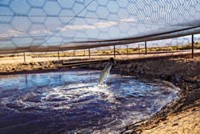Advertisement
Grab your lab coat. Let's get started
Welcome!
Welcome!
Create an account below to get 6 C&EN articles per month, receive newsletters and more - all free.
It seems this is your first time logging in online. Please enter the following information to continue.
As an ACS member you automatically get access to this site. All we need is few more details to create your reading experience.
Not you? Sign in with a different account.
Not you? Sign in with a different account.
ERROR 1
ERROR 1
ERROR 2
ERROR 2
ERROR 2
ERROR 2
ERROR 2
Password and Confirm password must match.
If you have an ACS member number, please enter it here so we can link this account to your membership. (optional)
ERROR 2
ACS values your privacy. By submitting your information, you are gaining access to C&EN and subscribing to our weekly newsletter. We use the information you provide to make your reading experience better, and we will never sell your data to third party members.
Environment
EPA Said To Allow Discharge Of Hazardous Chemicals To Rivers And Lakes From Sewage Plants
Agency’s inspector general says agency needs to expand list of substances monitored in wastewater
by Jessica Morrison
October 6, 2014
| A version of this story appeared in
Volume 92, Issue 40
The Environmental Protection Agency is allowing hazardous chemicals that industry flushes down the drain to slip through sewage treatment plants and pollute rivers and lakes, EPA’s internal watchdog says.
“These hazardous chemical discharges can have detrimental effects on human health and the environment,” says a report released last week by the agency’s independent Office of Inspector General (OIG). The report says EPA needs to do more to protect waterways from hazardous chemicals in wastewater discharged by sewage plants.
This problem, OIG says, stems from EPA’s narrow focus on a list of 126 chemicals called priority pollutants. The agency regulates this set of water pollutants under the Clean Water Act and has issued analytical test methods for them.
EPA last revised the list of priority pollutants in 1981. Yet the number of pollutants industry discharges to sewage treatment plants has increased during the past three decades, OIG points out. Missing from this list are pesticides, metals, and organic solvents that are identified as acutely hazardous under the federal law governing hazardous waste—the Resource Conservation & Recovery Act.
In addition, the report says EPA is inconsistent in its requirements for sewage plants to monitor the treated water they discharge for priority pollutants. For example, in the Southwest and Hawaii, the agency requires facilities to check for an average of 104 chemicals on the list. Elsewhere in the nation, plants must monitor for only four, on average.
In part, OIG recommends that EPA develop a revised list that goes beyond the current 126 chemicals. EPA says it will take action in response to the report within a year.




Join the conversation
Contact the reporter
Submit a Letter to the Editor for publication
Engage with us on Twitter